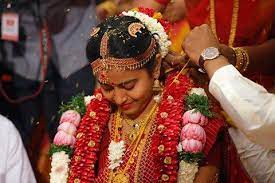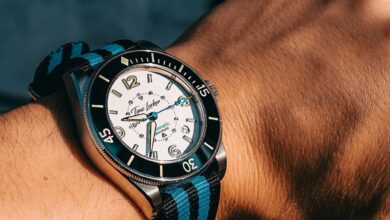Traditional Elegance: Exploring Kannada Matrimony Attire and Jewelry

Introduction
Kannada matrimony is a captivating blend of rituals, emotions, and celebrations that are deeply steeped in a tapestry of rich traditions and cultural importance. Among the various elements that contribute to the attraction of a Kannada wedding, the bride and groom’s clothes and jewellery stand out as captivating displays of heritage and style. In this essay, we’ll take an enthralling journey through Kannada matrimony clothing and the symbolism behind the beautiful jewellery that adorns this auspicious occasion.
Kannada Wedding Attire: A Kaleidoscope of Colours
A Kannada wedding is a colourful celebration of colours, materials, and designs that combine to produce a visual masterpiece. The bride’s outfit is the embodiment of grace and elegance, and the timeless Kanjivaram silk saree is the traditional option. These sarees, noted for their elaborate patterns and ornate borders, encapsulate Kannada culture and artistry.
Kannada bridal sarees’ colour palette extends from deep colours of crimson, maroon, and gold to regal blues, with each hue representing a distinct aspect of the celebration and the bride’s journey. The saree is frequently embellished with traditional designs, which provide depth and character to the whole garment.
The bride’s accessories, which include the traditional kasu mala (coin necklace) and the armband known as vanki, complement the saree. These items, which are frequently made of gold, emphasize the bride’s attractiveness and add to the regal aura of her gown.
The traditional outfit for the groom is defined by its simplicity and elegance. The groom usually wears an immaculate white dhoti, a silk angavastram (stole), and a matching silk shirt. This outfit exudes a feeling of purity and sophistication, representing the Kannada community’s traditional beliefs and customs.
The Tale of Jewellery: Symbolism and Tradition
Jewellery is a tapestry of symbolism, tradition, and cultural legacy that weaves together the past, present, and future in Kannada matrimony. Every item of jewellery worn by the bride and groom has symbolism, carrying the blessings of generations and expressing the Kannada culture’s deep-rooted values.
Bridal Jewellery: A Blessings Reflection
Jewellery is more than simply a fashion statement for the bride; it is a visible reflection of her family’s love, blessings, and dreams. Each jewellery plays an important role in the overall story of the wedding ceremony.
The bride’s marital status and fortune are symbolized by the maang tikka, which is gently placed on her forehead. It represents the sacred union of husband and wife as well as the blessings for a bright life ahead. As the bride wears this gorgeous necklace, she enters a new chapter of her life, guided by the love and wisdom of her forefathers.
The wedding haar (necklace) is a focal point of the bride’s attire and holds significant cultural importance. The Lakshmi Haar, which honours the goddess of wealth and prosperity, Lakshmi, is one of the most beloved. When the bride wears this necklace, she brings with her the blessings of abundance, not only in material wealth but also in love, happiness, and unity.
From Bangles to Anklets: A Story of Love
The tinkling sounds of “kankana,” or bangles, bring the bride’s wrists to life. These bangles have a deeper significance; they symbolize the holy link between husband and wife. They jingle with every movement, echoing the couple’s happiness and delight on their journey together.
The bride’s hands are intricately covered in mehndi designs, creating a canvas that recounts the narrative of their love and connection. Each swirl and pattern tells their story, depicting moments of courting and the promise of a shared future.
The bride’s stunning attire is completed with nose rings, earrings, and anklets. These embellishments highlight her natural beauty and elegance, making her shine even brighter on her special day.
Groom’s Jewellery: An Emblem of Commitment
While the bride’s jewellery is frequently the centre of attention, the groom’s accessories are equally important. A gold chain, bracelet, and ring decorate him, representing not only his physical attractiveness but also his dedication to his bride and the trip they are about to embark on. These antiques are more than just accessories; they signify duty, devotion, and the promise of a fruitful partnership.
Timeless Traditions Meet Modern Trends
While Kannada matrimony is profoundly anchored in tradition, modernization has gradually given nuances to dress and jewellery selections. Today’s brides and grooms are incorporating modern features into their wedding attire while preserving the spirit of Kannada tradition. The end result? A harmonic blend of tradition and modernity that beautifully reflects the current generation’s developing tastes and sensibilities.
While recognizing the cultural significance of Kannada wedding wear, modern women occasionally choose various colour palettes and innovative fashions. While traditional shades of red and gold remain popular, some brides experiment with a variety of colours, including their own personalities and preferences in their bridal style. This infusion of modern colours does not detract from the sacredness of the occasion but rather gives a refreshing sense of originality to the celebration.
Grooms, too, are attempting to combine tradition with modern dress preferences. While the traditional white dhoti is still popular, grooms are experimenting with the design and fabric of their angavastram (stole) and shirts. Some grooms may choose patterns, textures, and modern cuts that complement their unique style, resulting in a harmonious marriage of tradition and modern fashion trends.
The Significance of Kanjivaram Silk Sarees
Kanjivaram silk sarees have a special position in Kannada matrimony, and they have gracefully transcended time. These sarees, famed for their lush texture and exquisite motifs, exemplify Karnataka’s weaving tradition’s artistic prowess. The decision to wear a Kanjivaram silk saree on the wedding day is more than just a fashion statement; it represents a deep link to the region’s cultural heritage and traditions.
Each Kanjivaram saree offers a narrative of passion, workmanship, and legacy. These sarees, passed down through years, are more than just pieces of apparel; they are treasures that carry the legacy of families. The weaving of a Kanjivaram saree requires great attention to detail, with trained artisans pouring their heart and soul into each exquisite pattern and motif. Wearing a Kanjivaram saree is like wearing a work of art, a tribute to the long-lasting workmanship that has been practised for generations.
In a world where fads come and go, the Kanjivaram silk saree stands as a timeless depiction of the past, present, and future—a garment that embodies Kannada culture and the love and respect for tradition that characterizes Kannada matrimony.
Conclusion
Kannada marriages exemplify cultural history, tradition, and harmony. The carefully chosen dress and jewellery say loudly about the significance of these gatherings. Every piece of clothing and jewellery has a story to tell, and it is a symbol of love, tradition, and the marriage of two spirits. The bride’s saree and jewellery, as well as the groom’s dhoti and accessories, form a harmonic dance of tradition and modernity. Check out Tamil Matrimony if you are seeking a life partner in the Kannada community!
Couples start on their sacred journey adorned with the timeless elegance that only Kannada matrimony can provide—a journey where every stitch and every piece of jewellery symbolizes their joint commitment to a life weaved with tradition, love, and respect.





